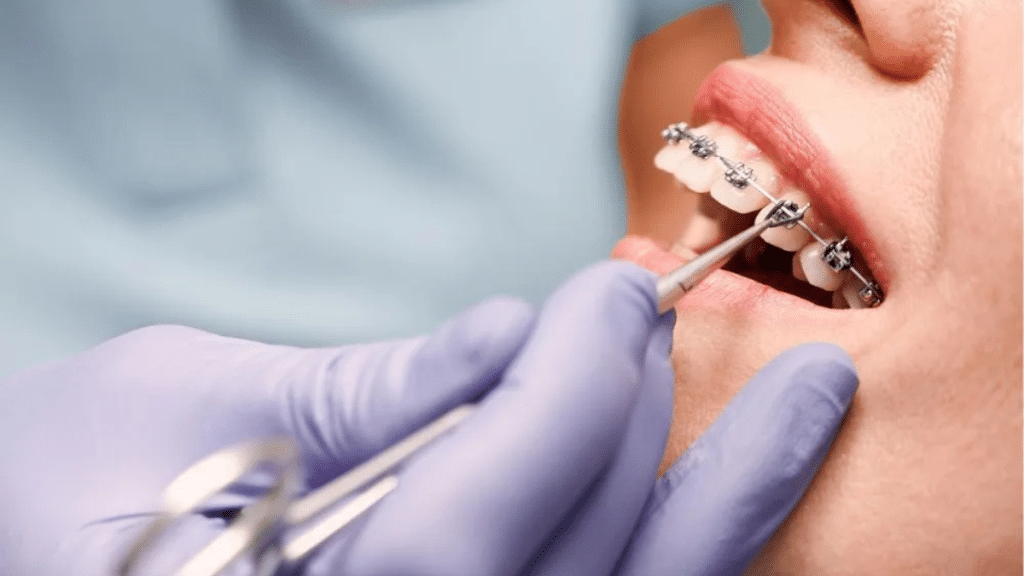Orthodontics has long been associated with teenage rites of passage—metal braces, awkward school photos, and that vague promise of a better smile someday. But this branch of dentistry has evolved far beyond adolescent aesthetics. In today’s world, orthodontic treatment isn’t just about straightening teeth. It plays a crucial role in how your jaw functions, how you chew, and, interestingly enough, how you carry yourself.
In short: your bite matters, more than you might think.
What Exactly Is a “Good” Bite?
For many people, the bite is a mystery until something goes noticeably wrong. Jaw pain, clicking, uneven tooth wear, or even recurring headaches can often be traced back to how your teeth come together. A good bite—technically referred to as a “normal occlusion”—allows for balanced pressure when chewing, proper alignment between upper and lower teeth, and unrestricted jaw movement.
But most people don’t have a textbook-perfect bite. Crowding, spacing, overbites, underbites, and crossbites are incredibly common, even among those who had braces as kids. And while they might not be life-threatening, these issues can slowly chip away at your dental health and self-esteem over time.
That’s where orthodontics comes in.
Why Alignment Affects More Than Just Looks
A crooked smile might be the most obvious sign that something’s amiss, but it’s only part of the picture. Poor alignment affects your bite mechanics, which in turn impacts everything from digestion to speech clarity. In some cases, people might unconsciously avoid certain foods or chew only on one side to compensate, which puts strain on muscles and joints.
Even posture can be subtly influenced by oral alignment. When the bite is off, the jaw’s resting position changes—and that ripple effect can extend to the neck and shoulders. Strange as it may sound, something as seemingly minor as a misaligned molar can quietly affect the way your whole upper body balances itself.
Modern orthodontics offers a variety of tools to address these issues, from traditional braces to discreet clear aligners. If you’re looking for help improving your bite and alignment, the right treatment can do more than just shift your teeth—it can restore harmony to your whole facial structure.
The Psychological Side of a Healthier Smile
It’s not all mechanics and muscle tension, of course. There’s an undeniable psychological element at play when people feel self-conscious about their teeth. Smiling is one of our most instinctive social gestures, and when you’re reluctant to do it—out of embarrassment, discomfort, or habit—it sends subtle cues to others and, perhaps more importantly, to yourself.
Several studies have linked smiling frequency to mood regulation and even perceived trustworthiness. That might sound like social psychology fluff, but the core idea is intuitive: when people feel good about their smile, they tend to use it more. And when they use it more, they feel more open, confident, and emotionally connected to those around them.
In this light, orthodontics becomes more than just a cosmetic fix. It’s a gateway to improved self-presentation and social confidence. Especially for adults who never had the chance to address dental issues in their youth, modern treatment options offer a second shot—not just at straighter teeth, but at a more confident presence.
Is It Ever Too Late?
Short answer: no, not really.
While early intervention does offer some advantages—mainly because children’s bones are still growing—there’s no hard cutoff for when orthodontic treatment can begin. In fact, adult orthodontics is one of the fastest-growing segments in the field. Clear aligners like Invisalign have removed much of the stigma and inconvenience once associated with braces, making treatment more accessible and appealing.
That said, adult cases can be a bit more complex. Gum health, bone density, and previous dental work all come into play. Some individuals might require additional procedures or longer treatment times. But these hurdles are rarely deal-breakers, and most orthodontists can tailor a plan that works around them.
And for those worried about the aesthetic commitment—yes, braces are visible. But depending on your lifestyle, clear aligners or ceramic brackets might be virtually unnoticeable to anyone but you. Plus, there’s something quietly empowering about investing in your health in such a visible, tangible way.
Orthodontics as Preventive Medicine
We tend to think of dental work as reactive: you get a cavity, you fill it; you get a toothache, you go in. But orthodontics often works best as a form of prevention. By correcting alignment early on—or at least before major complications develop—you can avoid a host of future issues: chipped teeth, chronic jaw pain, enamel erosion, even difficulty sleeping in some cases.
It’s worth thinking about the long game. The upfront cost and time commitment of orthodontic treatment can seem daunting, but compare that to the cumulative cost of dental restorations, night guards, and pain management later on. In many cases, getting ahead of the problem is not just healthier—it’s more economical.
Closing Thoughts
Orthodontics isn’t about chasing perfection. It’s about function, comfort, and subtle shifts that make a big difference over time. Whether you’re dealing with long-standing alignment issues or just starting to notice changes in your bite, it’s worth exploring what modern treatment has to offer.
The benefits go far beyond the mirror. A better bite can lead to better health, clearer speech, improved digestion, and yes, a boost in self-assurance. Confidence doesn’t always come from flashy changes; sometimes, it starts with the quiet, everyday comfort of knowing your smile works as well as it looks.

